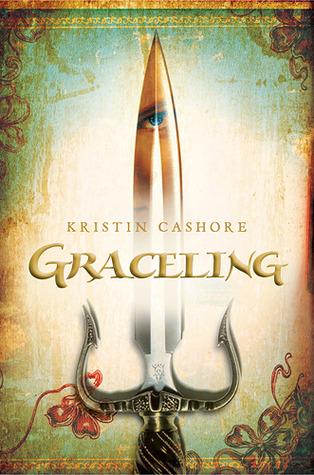Have you ever been isolated from others? You might be tempted to say “yes” if you’ve sequestered yourself during an illness or retreated to a favorite place to focus on writing or meditation. Isolation, however, isn’t the same as seclusion or solitude. It’s a state of aloneness in which you truly feel cut off from others because of your location or emotions, and its psychological toll can be devastating. So when an author explores isolation as a literary theme, the results are often haunting and heart-wrenching. After all, no one wants to see another person, real or fictional, suffer from their loneliness – and yet stories that shed light on this theme can offer intriguing insights about characters and their relationships with others.
So in today’s Theme: A Story’s Soul post, let’s look at how isolation is handled as a theme in two novels from different genres. As you read on, pay attention to the techniques or elements that these stories share, especially how they address physical and emotional isolation in ways that are appropriate for their characters.
 Isolation as a Theme in M.L. Stedman’s The Light Between Oceans (Historical Fiction)
Isolation as a Theme in M.L. Stedman’s The Light Between Oceans (Historical Fiction)
Set in Western Australia during the 1920s, M.L. Stedman’s The Light Between Oceans is the story of the Sherbournes, lighthouse keeper Tom and wife Isabel, who find a dead man and a living baby washed up in a boat and claim the infant girl as their own. Their decision wreaks havoc on their marriage, especially once friends, family, and other townspeople discover the little girl’s true identity. Isolation is among the novel’s themes, which Stedman captures both physically and emotionally.
For most of the novel, Tom is stationed at Janus Rock, an island about half a day’s boat ride from the harbor town of Point Partageuse. Here, mail and supplies are shipped quarterly from the mainland; radio is the only means of emergency contact; and the Sherbournes are the island’s only residents, apart from goats and chickens. Thus, Tom and Isabel are keenly aware of their isolation and react to it in different ways. Though Isabel loves Janus Rock, she becomes distraught by her and Tom’s aloneness after her first miscarriage: “‘There should be forests… I miss the trees, Tom. I miss their leaves and their smell and the fact that there are so many of them…’.” (74) But Tom, a World War I veteran, relishes the solitude. Before he marries Isabel, he writes in a letter that “the quiet [of Janus Rock] suits me” (52) and “finds a freedom in the silence” of not hearing his own voice for months (51 – 52).
Janus Rock isn’t the novel’s only example of physical isolation. During the third act, Tom is sent to jail for (according to the local authorities) kidnapping the little girl he and Isabel “adopted.” He realizes on his first night in prison that “[t]he solitude is familiar, carrying him back to his time alone on Janus, and he wonders if the years with Isabel and with Lucy were just imagined” (224). In other words, he finds solace in the isolation of prison as easily as he found it on Janus Rock, despite his terrible new circumstances and the emotions warring within him.
The Sherbournes are also good examples of characters who experience emotional isolation. Tom, for starters, uses his lighthouse work as a means of distancing himself from others so he can heal from the trauma of war (11) and to avoid inflicting physical or emotional pain on others (196). When he interacts with other characters, he’s often reserved or flustered – or, as Isabel describes during their courtship, “mysterious… as though, behind his smile, he was still far away” (48). This seemingly bridgeable gap grows into a painful rift once Isabel convinces Tom to raise the baby girl they found. Once the truth is discovered and Tom is imprisoned and Lucy returned to her birth mother, the thematic spotlight turns to Isabel, who remains silent and plunges into a deep, despairing loneliness despite being surrounded by family: “There’s no one she can talk to. No one who will understand. What sense can her life make by itself, without the family she lived for?” (260)
 Isolation as a Theme in Kristin Cashore’s Graceling (YA Fantasy)
Isolation as a Theme in Kristin Cashore’s Graceling (YA Fantasy)
Katsa is Kristin Cashore’s titular Graceling, an orphaned young woman born with an extreme skill known as a Grace. Her Grace, however, is not one she’s proud of: She can effortlessly kill other people. Now Katsa works for her uncle King Randa to intimidate and torture his enemies – until a new friend and a dangerous mission in a faraway kingdom compel her to make choices that, among other things, help her break free of years of isolation.
Most examples of isolation in Graceling show Katsa’s emotional distance from others. Most people in King Randa’s court either avoid Katsa or show “no pretense of friendliness” (10). Their fear and repulsion toward her is especially clear when she tries to make eye contact with them; in most cases, “their eyes would drop and they would hurry on” (12). So when other characters show Katsa kindness, she’s often unsure of how to react. When Prince Po touches her face for the first time, “[H]e looked at her calmly… as if friends she’d only just made always touched her face with their fingertips. As if she ever made friends. As if she had any basis for comparison, to decide what was normal when one made friends, and what was not” (95). In other words, Katsa has felt separate from others for so long that she fails to realize she has friends, or understand why someone would want to be her friend.
Other characters in Graceling also experience isolation, and for different reasons. After Katsa and Po rescue Princess Bitterblue (who lives in a kingdom that’s geographically cut off from the rest of the continent by mountains), Bitterblue reveals that her mother locked them both in her rooms so that Bitterblue’s father wouldn’t abuse them (295). In this case, Bitterblue’s mother turns to isolation as a means of protecting her daughter. Po, on the other hand, hides in an abandoned cabin later in the book so he can recover from a traumatic injury. When Katsa returns to Po, he admits, “‘I’ve been thinking of staying here, where it’s peaceful, and far away from everyone…. I want to be alone’” (442). Eventually, Katsa discovers the truth behind Po’s decision: He has become blind as a result of his accident, and is devastated that he can no longer see the people and places he loves (450). His choice to isolate himself is therefore rooted more in self-pity than in a desire to heal.
Keys to Exploring Isolation as a Literary Theme
It’s true that The Light Between Oceans and Graceling are very different novels. However, when comparing how they examine isolation as a literary theme, it’s easy to spot the elements they have in common. Here are a few I noticed. Did you find any others?
- Physical versus Emotional Isolation: The Light Between Oceans and Graceling both offer examples of physical and emotional isolation. Using this contrast allows readers to show how characters may feel or choose to be alone because of their location and/or physical separation from others, or because of their own personal reasons.
- Isolated Settings: Both novels illustrate physical isolation by describing how a character is cut off from others through geography (the island of Janus Rock, the mountain range separating Bitterblue’s kingdom from Katsa’s) or other means (Tom’s prison cell, Bitterblue and her mother’s self-confinement).
- Motivations & Choices: When characters choose isolation, they typically have strong reasons that are made known to the reader through dialogue (either spoken or internal) or appropriate bits of backstory. In the Light Between Oceans, Tom pursues work as a lighthouse keeper after World War I so that, among other reasons, he can avoid hurting others. Po in Graceling, however, is so upset by his loss of sight that he’d rather hide away than be with his loved ones.
- Isolation’s Impact on Characters…: Katsa may be fierce and independent, but because most people avoid her out of fear, she has suffered from the lack of kindness in her life. She and other characters from Graceling and The Light Between Oceans are proof that isolation has a profound effect on people, from missing loved ones and familiar places to feeling utterly bereft of home and relationships.
- And on the Relationships Between Characters: Isolation can also affect relationships between characters. Tom and Isabel from The Light Between Oceans are a great example in that their physical isolation from Point Partageuse impacts their relationship with the town’s residents, and their disagreement about keeping the little girl forges an emotional rift between them. Thus, stories that examine isolation might also highlight interpersonal themes such as family, friendship, and communication.
Now It’s Your Turn!
- What stories have you read that illustrate the theme of isolation? How did they accomplish this?
- Write a story in which the protagonist experiences physical and emotional isolation. How does her environment and her state of mind affect her and her relationships with other characters?
- Have you ever felt cut off from others because of your location or other circumstances? What kind of impact did it have on you? How were you able to endure or break free of the situation?
What topics would you like to see featured at Theme: A Story’s Soul? Share your thoughts by commenting below or tweeting me at @SaraL_Writer with the hashtag #DIYMFA.
 Sara Letourneau is a speculative fiction writer and poet in Massachusetts who devours good books, loves all kinds of music, and drinks copious amounts of tea. In addition to writing for DIY MFA, she is a Resident Writing Coach at Writers Helping Writers and is hard at work on a YA magical realism novel. She also freelanced as a tea reviewer and music journalist in the past. Her poetry has appeared in The Curry Arts Journal, Soul-Lit, The Eunoia Review, Underground Voices, and two print anthologies. Visit Sara at her personal blog, Twitter, and Goodreads.
Sara Letourneau is a speculative fiction writer and poet in Massachusetts who devours good books, loves all kinds of music, and drinks copious amounts of tea. In addition to writing for DIY MFA, she is a Resident Writing Coach at Writers Helping Writers and is hard at work on a YA magical realism novel. She also freelanced as a tea reviewer and music journalist in the past. Her poetry has appeared in The Curry Arts Journal, Soul-Lit, The Eunoia Review, Underground Voices, and two print anthologies. Visit Sara at her personal blog, Twitter, and Goodreads.







